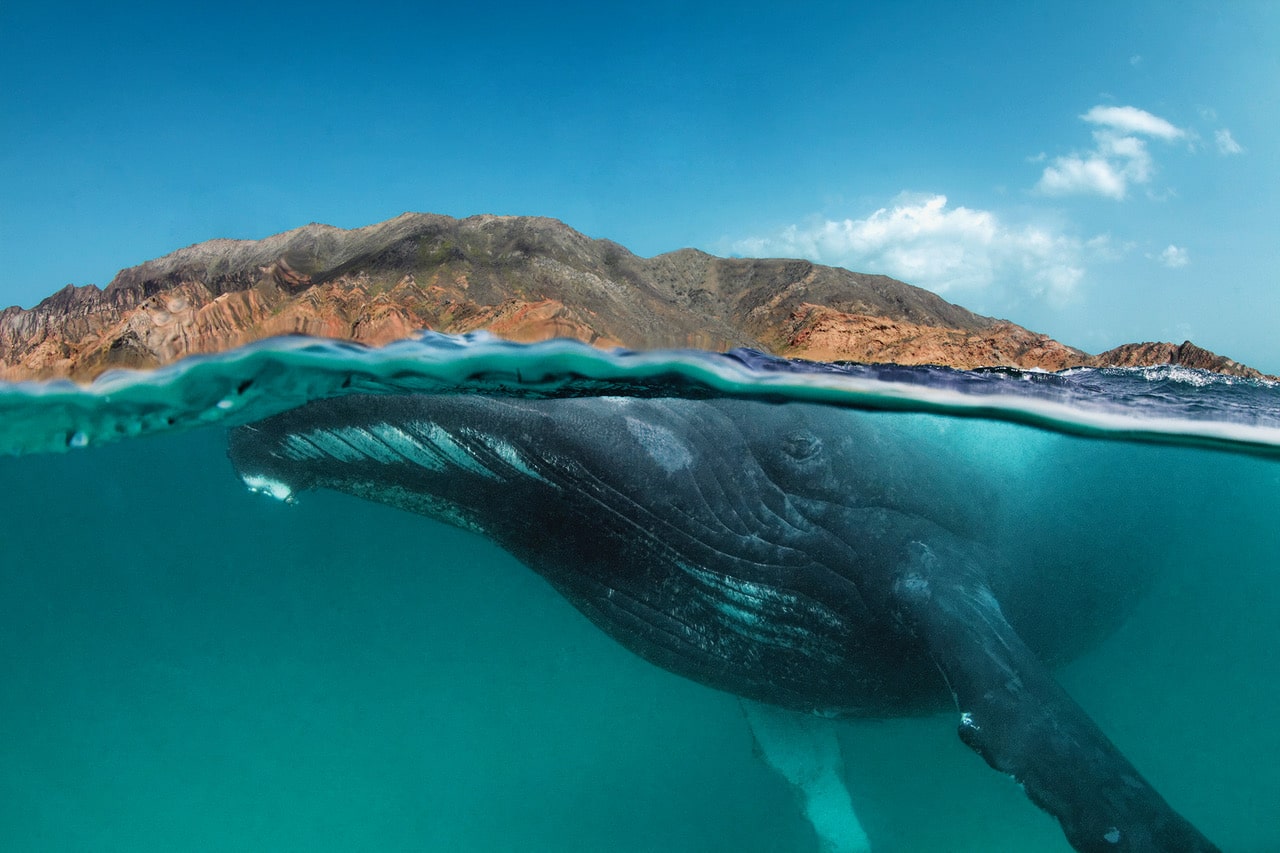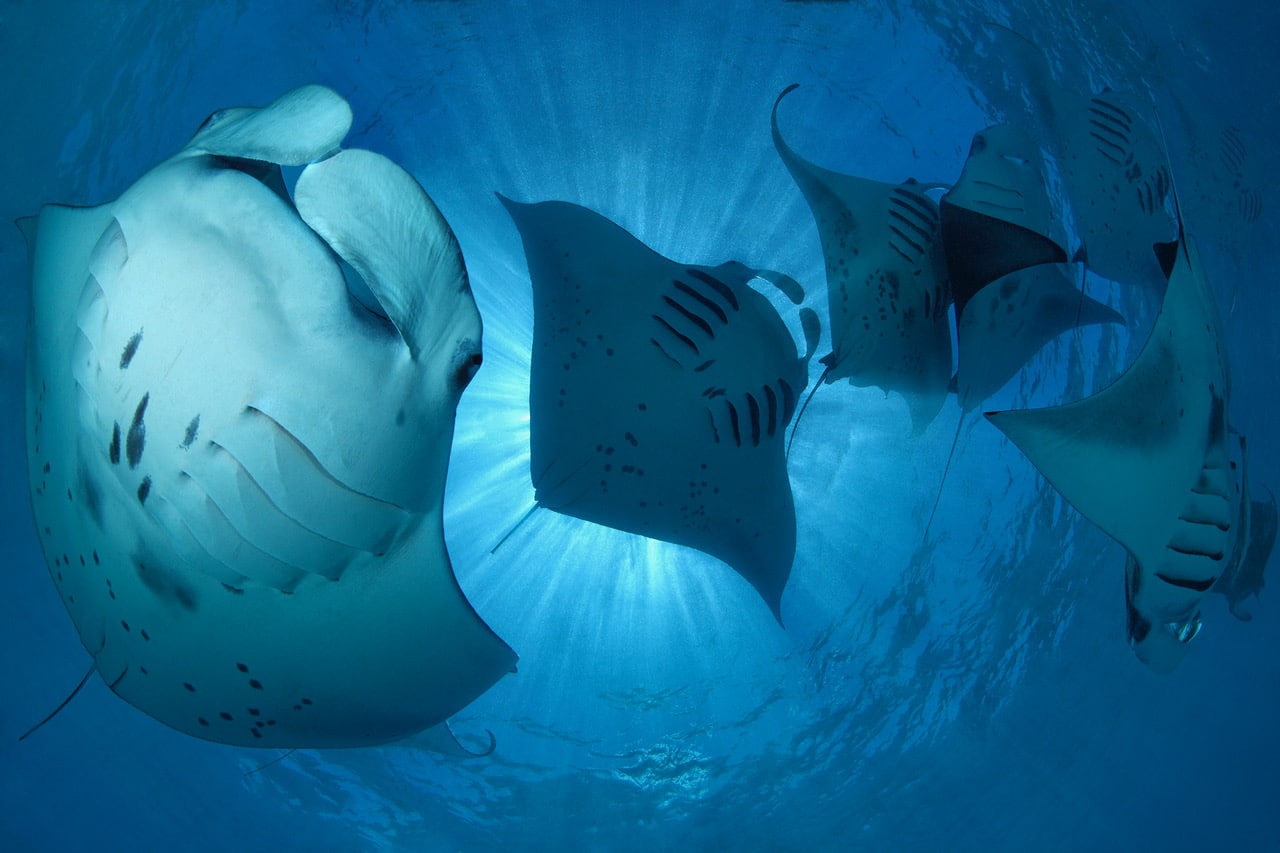News
Scubaverse Underwater Photographer Interview: Tobias Friedrich

In this ongoing series, Scubaverse’s Underwater Photography Editor Nick Robertson-Brown talks to underwater photographers from around the world that he admires. In this blog: Tobias Friedrich
 In his childhood Tobias Friedrich loved to watch the adventures of the Calypso with Jacques-Yves Cousteau as its captain and the beauty of the world that is below the ocean’s surface. It’s still an overwhelming feeling for him when he has the chance to dive. He loves the elegance and calmness of the world underwater standing in contrast to the hectic atmosphere above.
In his childhood Tobias Friedrich loved to watch the adventures of the Calypso with Jacques-Yves Cousteau as its captain and the beauty of the world that is below the ocean’s surface. It’s still an overwhelming feeling for him when he has the chance to dive. He loves the elegance and calmness of the world underwater standing in contrast to the hectic atmosphere above.
Tobias Friedrich lives in Germany and started taking pictures with a DSLR underwater in 2007. Since then, his images have been published in prestigious scuba diving magazines and newspapers around the world. Several underwater photographic competitions have honoured his work, resulting in over 50 awards with nearly 30 1st places. Lately he has been named “Underwater Photographer of the Year 2018” in the prestigious UPY London competition and “German Photographer of the Year 2019” in Germany. All waters, from zero to 30° Celsius, are attractive for him, so long as there is something to photograph. He uses SEACAM equipment for his Canon EOS 1DX Mark II and 5D Mark II DSLR. Tobias leads expeditions and workshops around the world, where everybody can join.
NRB: How did your underwater photography start?
TF: Basically, through diving. I made my Open Water Diver in 2001 and from 2003 I took a small compact camera underwater to be able to take a few shots. In 2007 I changed to a DSLR and from then on it started to become more professional.
NRB: What is your favourite u/w camera equipment (past & present) & why?
TF: My current main camera is a Canon 1DX Mark II in a SEACAM silver housing along with SEACAM Seaflash 150D strobes. Everything else is also from SEACAM. I consider this setup as the best I have had so far.
NRB: What would be your advice to anyone new to underwater photography?
TF: Try to take the camera as much as you can underwater and learn from images of other underwater photographers as you try to analyse why they are good (or not). This helped me a lot in the beginning.

Iceberg with a diver underneath it with video lights shining on the iceberg, supported by Northern Explorers A/S, Tasiilaq, East Greenland, Atlantic Ocean, Arctic, Northpole, Icebergs.
NRB: What, or who, has been your single biggest inspiration for your underwater photography?
TF: I followed Eric Cheng a lot in the early 2000s and I can definitely say that he inspired me in becoming an underwater photographer.
NRB: What image are you most proud of and why?
TF: I’m not really “proud” of my images, I’m just happy if people like them. But I was proud that Adobe selected my split shot of the Humpback Whale from the Sultanate of Oman as their start screen of Adobe Lightroom Classic.

Humpback whale, Megaptera novaeangliae, swimming close to the surface in a split shot half under and half over water with brown desert mountains in the background at Al Sawda, Al-Hallaniyah, Khuriya Muriya Islands, Oman, Indian Ocean.
NRB: Where is your favourite dive location, and is it for the photography?
TF: That are so many, but if I have to name one, then definitely Egypt because it’s so reliable regarding diving and photography there, and at the same time so close to reach.
NRB: What are you views on marine life manipulation, moving subjects?
TF: It’s a definite no go for me to manipulate images, especially for marine life and also if you want to document marine life. To remove a diver in the background who is “in the way” might be ok as well for advertising, but not in documentary.
NRB: What do you look for when you are making your images?
TF: Usually not something in particular. I like to go on a dive and discover the subjects right on the dive. But then I’m always looking for the best perspective on a subject.

Split shot of a hard coral garden with sunset behind it, Gordon Reef, Strait of Tiran, Northern Red Sea, Egypt, Northern Africa.
NRB: What motivates you to take u/w photos?
TF: To see that people like the images and they can see the beauty of the oceans and they need to be preserved.

Male Orca Whale, Orcinus orca, swimming underneath the surface to take a breath, split shot half half with snowy mountains in the background, near Tromso, near Skjervoy, Northern Norway, Atlantic Ocean.
NRB: If you could photograph any one thing/place what or where would that be?
TF: I would like to photograph a Blue Whale.
To see more of Tobias’ work please visit his website here: www.BELOW-SURFACE.com
His book “Underwater Photography” about how to photograph underwater can be found on Amazon and is available in English and German: www.amazon.com/Underwater-Photography-Tobias-Friedrich/dp/1937538524
To read his feature on Apo Reef in our Philippines Dive Adventures magazine click here.
Gear News
Introducing the TR-80, IR-50 and CS-30 Regulators from DYNAMICNORD

Whether you are a beginner or a professional diver – with the three new main regulators from DYNAMICNORD, everyone will find their favourite regulator. They all look super stylish.
Excellent performance with the TR-80
Quality and performance are the be-all and end-all for regulators. It is not for nothing that the TR stands for Tec Reg. The innovative design of the TR-80 guarantees absolute reliability – even in ice-cold waters.

Perfect breathing effort at 0.8 J/l / certified for diving in waters below 10 degrees / structural design made of solid brass for best cold protection / membrane-compensated design with dry seal of the first stage / reduced exhalation effort thanks to optimized exhalation membrane and bubble deflector / adjustable Venturi (dive/predive) and adjustment knob for individual inhalation comfort / innovative design of the front cover prevents free-flow in strong currents or when diving with scooters / design made of sandblasted brass, matt chrome finish / 2 HP and 4 LP outlets / mouthpiece made of high-quality, anti-allergic silicone for maximum comfort.


Amazing underwater adventures with the IR-50
The IR-50 is the top regulator for advanced and experienced divers. Natural breathing is the essence of this regulator.

Ideal breathing effort at 0.8 J/l /certified for diving in waters below 10 degrees / compensated membrane / adjustable venturi (dive/predive) and adjustment knob for individual inhalation comfort/ outlet valve and deflector for minimum exhalation effort and reduction of bubbles on the face / design made of sandblasted brass, matt chrome finish / 2 HP and 4 NP outlets / mouthpiece made of high-quality, anti-allergic silicone for maximum comfort.


The Workhorse – our CS-30
For diving centres and diving beginners – the workhorse stands for strong construction, reliability and robustness. Perfect for your training.

Optimal breathing effort at 0.8 J/l /recommended for diving in waters above 10 degrees / non-compensated piston / adjustable venturi (dive/predive) / outlet valve and deflector for minimum exhalation effort and reduction of bubbles on the face / design made of sandblasted brass, matt chrome finish / 1 HP and 3 NP outlets / mouthpiece made of high-quality, anti-allergic silicone for maximum comfort.


Octopus OP-30
The OP-30 is the ideal addition to all DYNAMICNORD regulators. It is identical in construction to the CS-30.

The TR-80, IR-50, CS-30 (DIN & INT) regulators and the Octopus OP-30 are available from DYNAMICNORD dealers and in the online store.
DYNAMICNORD – Your Outdoor Companion.
Marine Life & Conservation
Paul Watson Released as Denmark Blocks Japan’s Extradition Bid

Renowned anti-whaling activist Paul Watson has been released from custody in Greenland after spending five months in detention. Denmark’s Justice Ministry rejected Japan’s request for his extradition, citing insufficient guarantees that his time already served in custody would be credited against any potential sentence.
The 74-year-old Canadian-American was arrested on July 21 in Nuuk, Greenland’s capital, when his ship docked to refuel. His arrest was based on a 2012 Japanese warrant related to a 2010 encounter in Antarctic waters. Japan alleged Watson obstructed operations and caused damage to a whaling research ship during efforts to disrupt illegal whaling. Watson has consistently denied these claims, maintaining his commitment to marine conservation.
Denmark, which oversees extradition matters for Greenland, concluded that while the legal conditions for extradition were met, the lack of assurances from Japan regarding time-served credit made extradition untenable.
In a video shared by his foundation, Watson expressed gratitude and relief, saying, “After five months, it’s good to be out… and good to know they’re not sending me to Japan.” He added that the most difficult part of his time in custody was being separated from his two young sons.
Watson is a pioneering figure in marine conservation, known for founding the Captain Paul Watson Foundation in 2022 after decades of activism with the Sea Shepherd Conservation Society. His bold efforts to defend marine life have earned him widespread support, including from celebrities and conservationists. His work has also been featured in the acclaimed reality TV series Whale Wars.
Watson’s lawyer, Jonas Christoffersen, praised the decision, stating, “We are happy and relieved that Paul Watson is now free.” He added that Watson is eager to reunite with his family and continue his vital work.
The arrest occurred while Watson’s vessel, the M/Y John Paul DeJoria, was en route to the North Pacific with a team of 26 volunteers to intercept a Japanese whaling ship. His foundation described the arrest as politically motivated and emphasized that Watson’s actions were focused on ending illegal whaling practices.
Japan resumed commercial whaling in 2019 after leaving the International Whaling Commission, asserting that whale meat is a cultural tradition. Conservationists, however, continue to challenge these practices, highlighting their impact on marine ecosystems.
Despite the challenges, Watson remains steadfast in his mission to protect marine life and bring attention to whaling practices. His dedication to ocean conservation has made him a globally respected advocate for the environment.
-

 News2 months ago
News2 months agoIconic SS United States to become the World’s Largest Artificial Reef
-

 News3 months ago
News3 months agoBook Review – 52 Assignments: Underwater Photography
-

 Gear News3 months ago
Gear News3 months agoDYNAMICNORD – New German diving brand enters the British market
-

 News3 months ago
News3 months agoExploring Cenote El Pit: A Diver’s Dream
-

 Gear News3 months ago
Gear News3 months agoTry BARE drysuits (and maybe even win one!) this Friday with Sea & Sea at North West Dive Fest
-

 Marine Life & Conservation3 months ago
Marine Life & Conservation3 months agoBook Review: Coral Triangle Cameos
-

 Blogs2 months ago
Blogs2 months agoDive the Egyptian Red Sea this Autumn with Regaldive
-

 News3 months ago
News3 months ago2024 Ocean Art Underwater Photo Competition Announced














